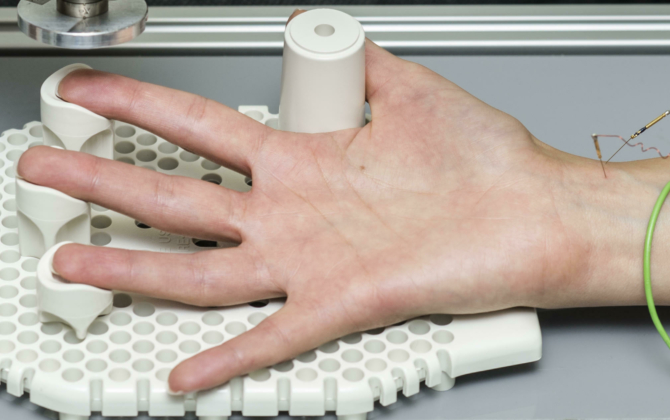Jump to
Our ability to sense, discriminate and interpret vibrotactile stimuli underpins some of the most crucial functions of the human hand that relate to object exploration and manipulation. The fundamental rules that explain how spike trains generated by tactile receptors are interpreted by the nervous system are not known. By combining human psychophysical data with microneurographic recordings from single human tactile afferents, we expect to be the first to demonstrate that a sophisticated temporal analysis mechanism underpins the perception of the frequency of vibrotactile stimuli. This project has one branch focusing on prosthetic development of a non-invasive prosthetic system that can restore tactile perception in patients and potentially could be used in brain-machine interfaces (BMIs).

